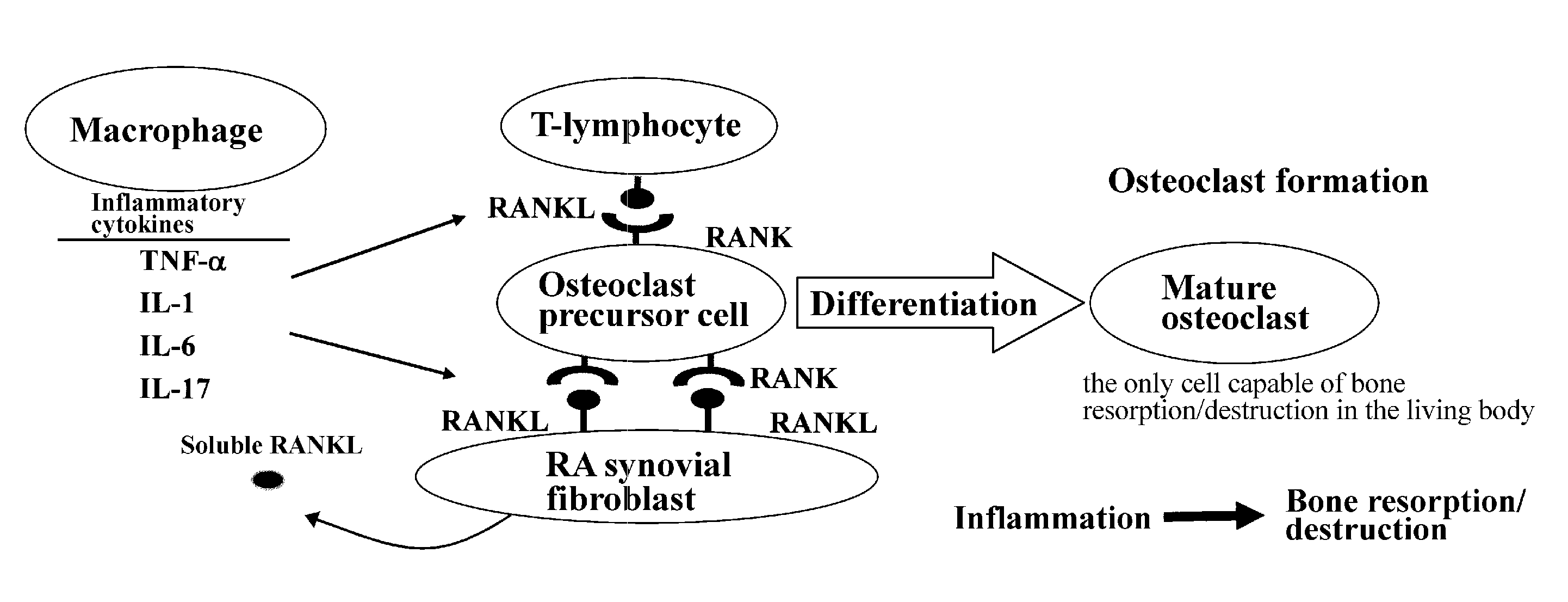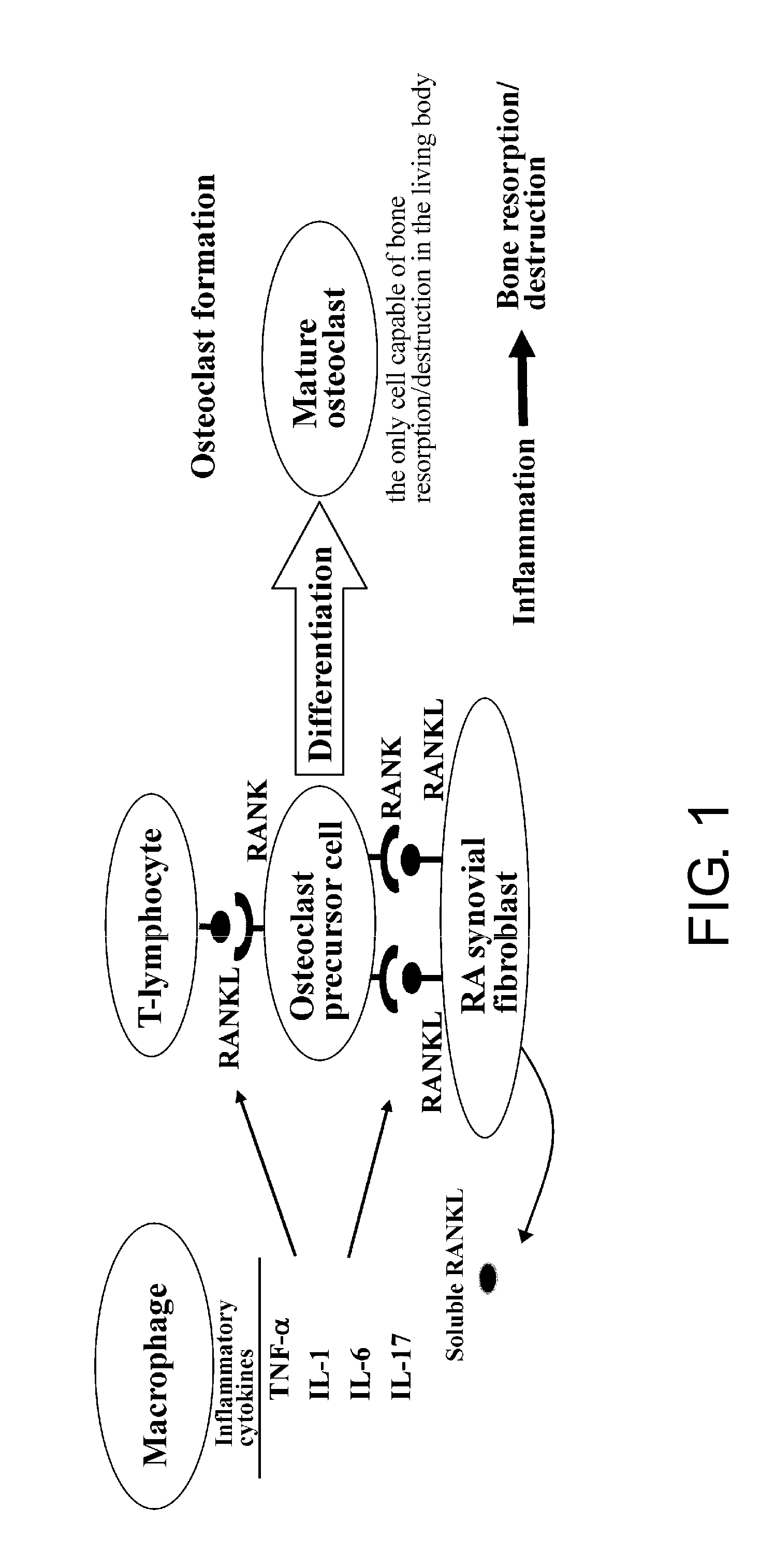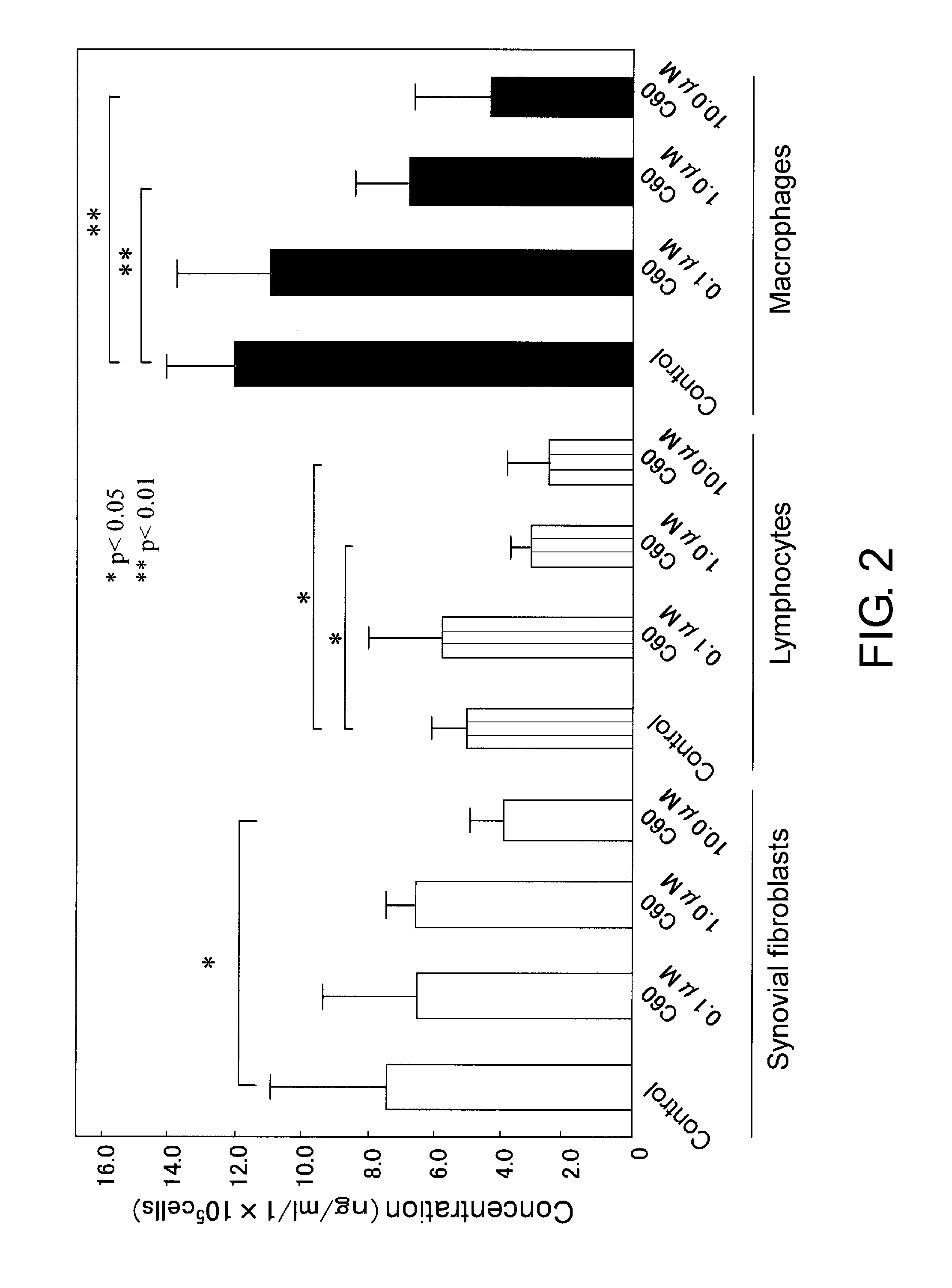Therapeutic agent for rheumatoid arthritis
a rheumatoid arthritis and therapy agent technology, applied in the field of new rheumatoid arthritis therapeutic agents, can solve the problems of severe symptoms affecting life prognosis, superior anti-rheumatic agents are not effective for all patients, and deformation or damage of bones and cartilages, etc., to suppress the differentiation into osteoclasts, suppress the inflammatory cytokine production level, and suppress the effect of bone resorption
- Summary
- Abstract
- Description
- Claims
- Application Information
AI Technical Summary
Benefits of technology
Problems solved by technology
Method used
Image
Examples
example 1
Effects of C60 on the Activation of Inflammatory Cells (Synovial Fibroblasts, Infiltrating Lymphocytes and Macrophages)
[0047]Since arthritis is an inflammatory disease whose primary site is intraarticular synovial membrane, direct actions of C60 on synovial fibroblasts and infiltrating lymphocytes were examined. In particular, effects of C60 addition on inflammatory cytokine production from the above-mentioned cells were examined.
example 1-1
Cell Culture
[0048]Synovial fibroblasts isolated from human articular synovial tissues, and lymphocytes and macrophages separated from the blood of healthy individuals were used for culture.
i) Preparation of Synovial Fibroblasts
[0049]After obtaining informed consent, synovial tissues were collected from surgically-removed tissues from rheumatoid arthritis patients. The synovial tissues were sliced and then treated in a liquid low-glucose Dulbecco's modified Eagle's medium (DMEM, manufactured by Gibco Co.) containing 1.0 mg / ml collagenase at 37° C. overnight, to isolate synovial fibroblasts for culture. The cells were normally cultured in a culture flask (culture area: 25 cm2), and in a polystyrene culture dish (diameter: 6 cm) when used in experiments. The cell culture was performed using a DMEM medium added with inactivated fetal bovine serum (FBS, manufactured by TRACE Co.) at 10% volume of the medium, and also 2 mM L-glutamine, 25 mM HEPES, and penicillin and streptomycin at 100 u...
example 1-2
Cell Growth Ability
[0051]Effects of C60 on the viability of synovial fibroblasts, lymphocytes, and macrophages were evaluated by the XTT method.
[0052]C60 (crown-fullerene: manufactured by Frontier Carbon Corp.) was dissolved in PBS to prepare a 40 μM stock solution, and this was stored in a dark place at −20° C.
[0053]The C60 concentrations used for treatment were 0.1 μM, 1.0 μM, and 10.0 μM, and the drug treatment durations were 48 hours and 96 hours. 50 μL of each type of cell in the logarithmic growth phase was added to a 96-well microplate at a concentration of 5.0×105 cells / mL, and cultured for 24 hours in a CO2 incubator (normoxic condition). C60 was added at each of the desired concentrations (final volume of 100 μL) to the 96-well microplate. After culturing for 48 or 96 hours, the medium was exchanged, and the cells were further cultured for 12 hours. 50 μL of the XTT reagent was added to each well, and cultured for four hours. Then, the absorbance at 450 nm was immediately ...
PUM
| Property | Measurement | Unit |
|---|---|---|
| diameter | aaaaa | aaaaa |
| humidity | aaaaa | aaaaa |
| volume | aaaaa | aaaaa |
Abstract
Description
Claims
Application Information
 Login to View More
Login to View More - R&D
- Intellectual Property
- Life Sciences
- Materials
- Tech Scout
- Unparalleled Data Quality
- Higher Quality Content
- 60% Fewer Hallucinations
Browse by: Latest US Patents, China's latest patents, Technical Efficacy Thesaurus, Application Domain, Technology Topic, Popular Technical Reports.
© 2025 PatSnap. All rights reserved.Legal|Privacy policy|Modern Slavery Act Transparency Statement|Sitemap|About US| Contact US: help@patsnap.com



